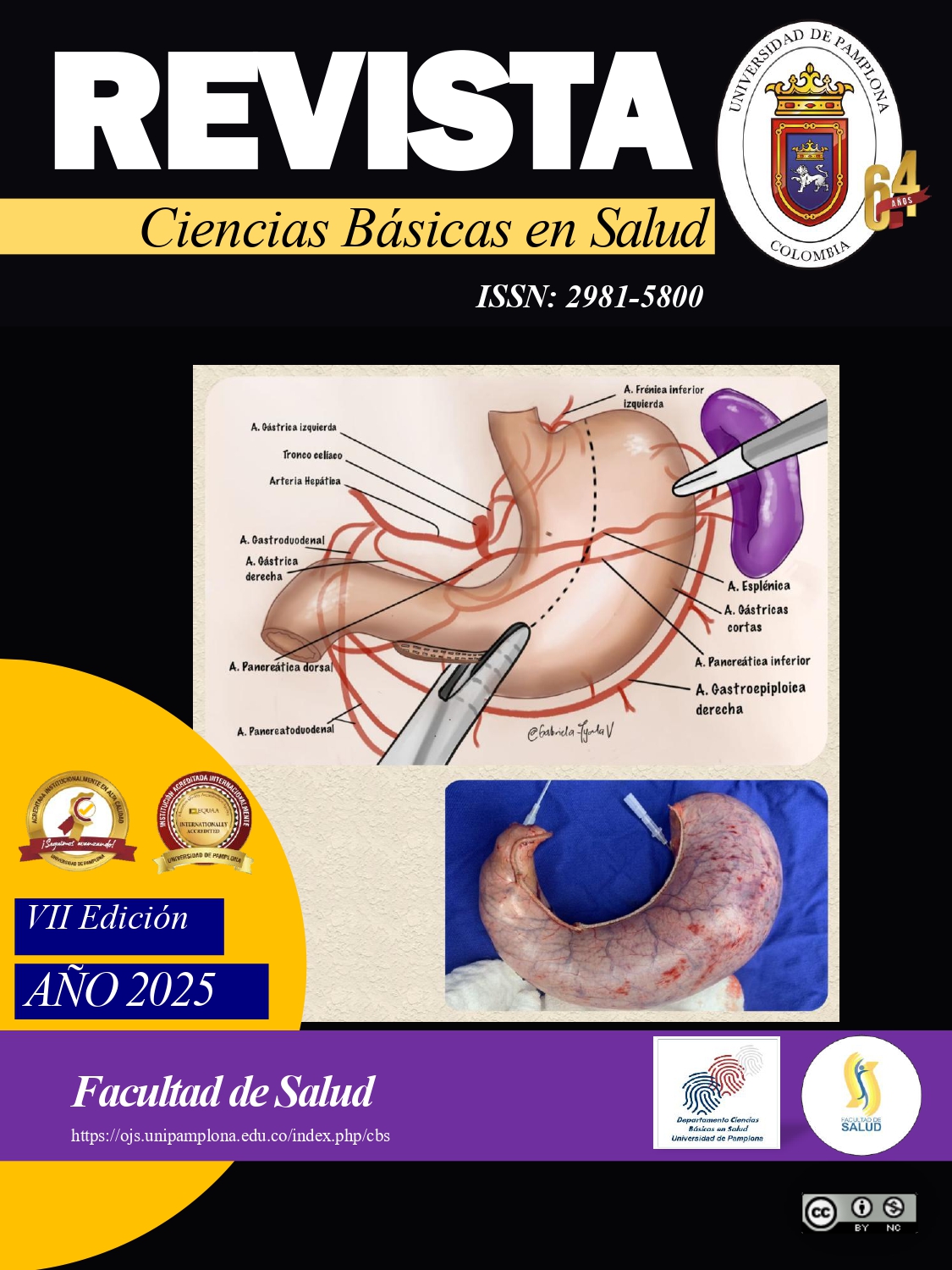Chylothorax in a Patient With a Thoracoabdominal Wound: Case Report
DOI:
https://doi.org/10.24054/cbs.v3i1.3643Keywords:
Gunshot wound, Chylothorax, Pneumothorax, Hemothorax, NutritionAbstract
A healthy patient produces approximately two liters of chylous fluid from the gastrointestinal tract in 24 hours, which is transported through the thoracic duct to the vascular system. When an injury occurs to this duct by any mechanism, a rapid accumulation of chyle in the pleural space follows. We present the case of a 41-year-old man who was admitted to the emergency department with a gunshot wound at the thoracoabdominal level, which required management with closed thoracostomy and diaphragmatic lesion repair. During his postoperative period, chylous fluid was observed in the drainage systems. A cytochemical test confirmed the presence of chylothorax with a triglyceride level of 166.03. A multidisciplinary approach was initiated by the thoracic surgery and nutrition teams. After two weeks, the patient developed peristalsis with clinical symptoms, and surgical management with pleurodesis was performed due to the lack of changes in the patient's condition. As a final measure, thoracic duct management was decided upon, and the patient showed improvement and was subsequently discharged from the institution.
Downloads
References
Bhatnagar, M., Fisher, A., Ramsaroop, S., Carter, A., & Pippard, B. (2024). Chylothorax: pathophysiology, diagnosis, and management-a comprehensive review. Journal of thoracic disease, 16(2), 1645–1661. https://doi.org/10.21037/jtd-23-163
Riley, L. E., & Ataya, A. (2019). Clinical approach and review of causes of a chylothorax. Respiratory Medicine, 157, 7–13. https://doi.org/10.1016/j.rmed.2019.08.014
Gilyard, S. N., Khaja, M. S., Goswami, A. K., Kokabi, N., Saad, W. E., & Majdalany, B. S. (2020). Traumatic chylothorax: Approach and outcomes. Seminars in Interventional Radiology, 37(3), 263–268. https://doi.org/10.1055/s-0040-1713443
Bacon, B. T., & Mashas, W. (2020). Chylothorax caused by blunt trauma: Case review and management proposal. Trauma Case Reports, 28(100308), 100308. https://doi.org/10.1016/j.tcr.2020.100308
McGrath, E. E., Blades, Z., & Anderson, P. B. (2010). Chylothorax: aetiology, diagnosis and therapeutic options. Respiratory Medicine, 104(1), 1–8. https://doi.org/10.1016/j.rmed.2009.08.010
Staats, B. A., Ellefson, R. D., Budahn, L. L., Dines, D. E., Prakash, U. B., & Offord, K. (1980). The lipoprotein profile of chylous and nonchylous pleural effusions. Mayo Clinic Proceedings. Mayo Clinic, 55(11), 700–704.
Ur Rehman, K., & Sivakumar, P. (2022). Non-traumatic chylothorax: diagnostic and therapeutic strategies. Breathe (Sheffield, England), 18(2), 210163. https://doi.org/10.1183/20734735.0163-2021
Martucci, N., Tracey, M., & Rocco, G. (2015). Postoperative chylothorax. Thoracic Surgery Clinics, 25(4), 523–528. https://doi.org/10.1016/j.thorsurg.2015.07.014
Pillay, T. G., & Singh, B. (2016). A review of traumatic chylothorax. Injury, 47(3), 545–550. https://doi.org/10.1016/j.injury.2015.12.015
Downloads
Published
How to Cite
Issue
Section
License
Copyright (c) 2025 Basic Health sciencies journal

This work is licensed under a Creative Commons Attribution-NonCommercial 4.0 International License.







